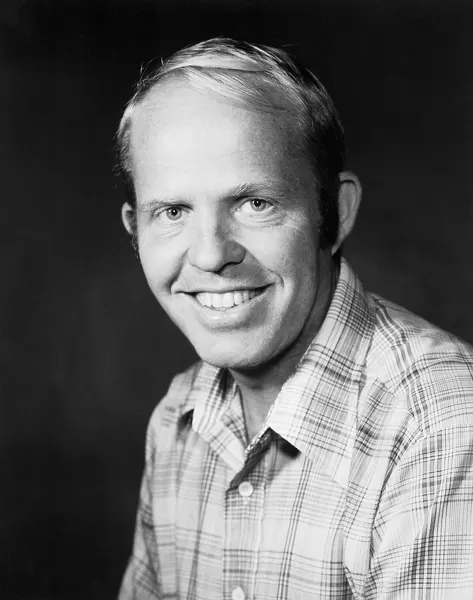Among the crowd of employed citizens ending their work day, Rosa Parks headed towards the Cleveland Avenue bus stop with hopes of securing a seat for the journey back to her apartment. Upon reaching the station, Mrs. Parks was relieved to find that there were less patrons than normal, allowing her to find a seat at the front of the color only section of the bus. After a long day working as a seamstress at a local department store, she was grateful to have the opportunity to rest.
However, the bus would hardly complete half of its route before the bus driver demanded Parks give up her seat to a white passenger–at this time it was not uncommon for the bus driver to force those in the colored section to stand once the white only portion had filled with passengers. This was likely not Park’s first experience, but on this particular day–December 1st, 1955–she would refuse to comply with the driver’s orders.
Since Montgomery ordinance allowed bus operators to take action against those who disobeyed their orders, Parks was arrested and incarcerated. As soon as Rosa Parks was able to make a phone call, she reached out to E.D. Nixon, a prominent black leader. Nixon bailed Parks out of jail, believing she would be an ideal plaintiff for a case against segregation due to impeccable character and deep resolve. Consequently, Rosa Parks sued the City of Montgomery under the equal protection clause of the 14th amendment.
At the same time, the African American community was outraged by the injustice and blatant discrimination. In response, the Women's Political Council led by Jo Ann Robison disseminated protest literature while Nixon assembled the Montgomery Improvement Association (MIA) in order to organize a bus boycott.
Led by a young Martin Luther King Junior, the MIA organized massive car pools and rider pick up locations in order to circumvent the Montgomery bus system. Through MLK’s connection with the church, the organization received money through church donations and used religious assemblies to spread its mission.
Finding a cause to put their frustration behind, many African Americans eagerly participated in the boycott, hoping to reverse injustice. Despite the personal inconvenience, thousands of Africans took alternative routes, shared rides, and walked to their destination in protest. Since colored riders made up over seventy-five percent of the bus services business, the city was losing 30,000 to 40,000 shares a day.
As the boycott waned on, Montgomery City Lines began to feel the financial implications of the boycott, causing the city to make attempts to end the boycott. Local police would harass carpoolers, often preventing them from arriving at their destination or levying petty fines. Nonetheless, the boycott continued until Park’s lawsuit reached the supreme court in 1956 where it was determined that segregationally laws in busing service were unconstitutional under the equal protections clause; such a ruling was heavily influenced by the precedent in Brown v. the Board of Education Topeka (1955).
The success of this boycott was paramount because it demonstrated the power of peaceful protests. At the same time, it established MLK as the leader of the civil rights movement and proved that the Brown decisions struck down the doctrine of separate but equal. While the Montgomery bus boycott and the desegregation of public transportation was a major victory for the African American cause, it was only the start of a decade-long struggle for civil rights.
In a similar Incident involving bus transportation four years later, a interracial group of civil rights activists sought to test the 1960 Boynton v. Virginia ruling which extended desegregation to all facilities associated with interstate travel. The group, made up of seven African American and six whites, left for New Orleans in a Greyhound bus on May 4, 1961.
As they traveled, the white riders made it a point to use black facilities while black riders deliberately used white facilities. This behavior challenged segregation and was carried out in protest of the Jim Crow laws that lingered in the South.
The first incident of violence occurred on May 12 in South Carolina when two of the African American riders were viciously beaten for occupying a whites-only waiting area. However, this violence would appear insignificant as the bus traveled further into the deep south.
In Atlanta, the group would split between two buses, but continued in the same direction. The first bus into Anniston, Alabama was followed by an angry mob in automobiles. When one of the tires of the bus blew out, the mob firebombed the bus, forcing the activists to flee certain dangers. As they deserted the inflamed bus, the activists were savagely beaten by members of the surrounding mob.
The second bus was similarly attacked in Birmingham. In both cases, the police response was significantly delayed and collusion was suspected. Although the riders were unable to reach their destination and suffered severe abuse, they were able to spotlight the issue of racial violence which gained international attention.
The Student Nonviolent Coordinating Committee (SNCC) in Nashville revitalized the effort and attempted the route once more. Upon their first trials, the members were arrested and deported to Tennessee. Undeterred, the SNCC members would attempt to complete the route, only to be ruthlessly beaten in Alabama.
After these events, National Guard support was promised by Attorney General Robert Kennedy. Still, freedom riders were beaten and arrested consistently, leading President John F. Kennedy to demand the Interstate Commerce Commission (ICC) to enact and execute stricter anti-segregation policies. In September of 1961, the ICC mandated desegregation of interstate bus terminals, upholding the Boynton v. Virginia decision and bringing an end to the freedom rides.












No comments:
Post a Comment